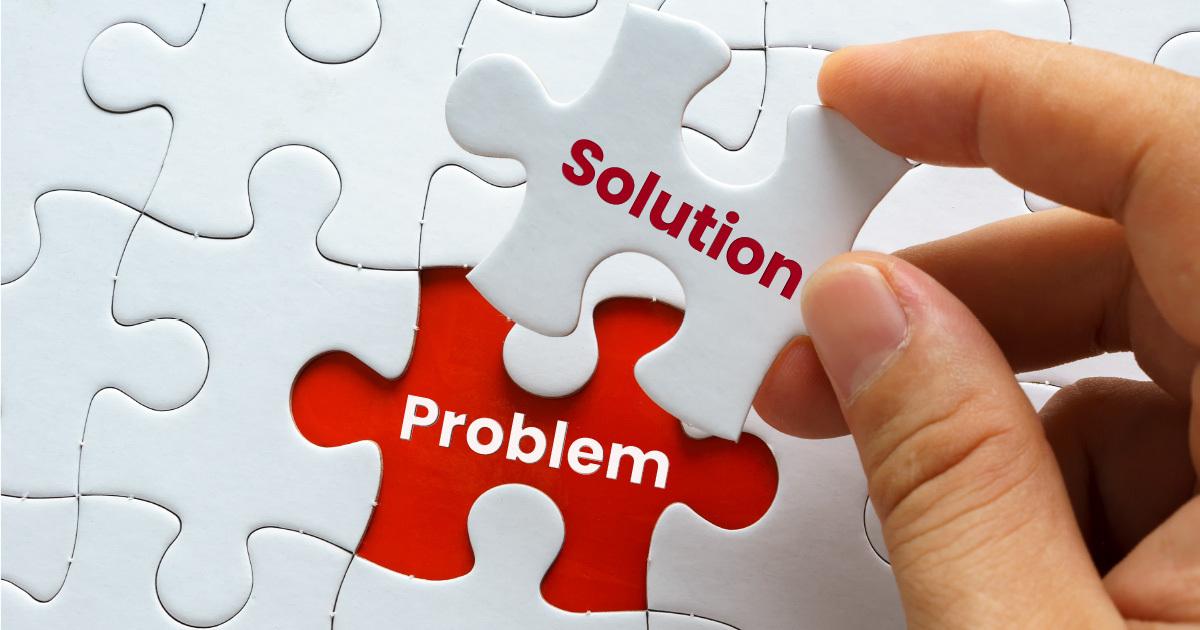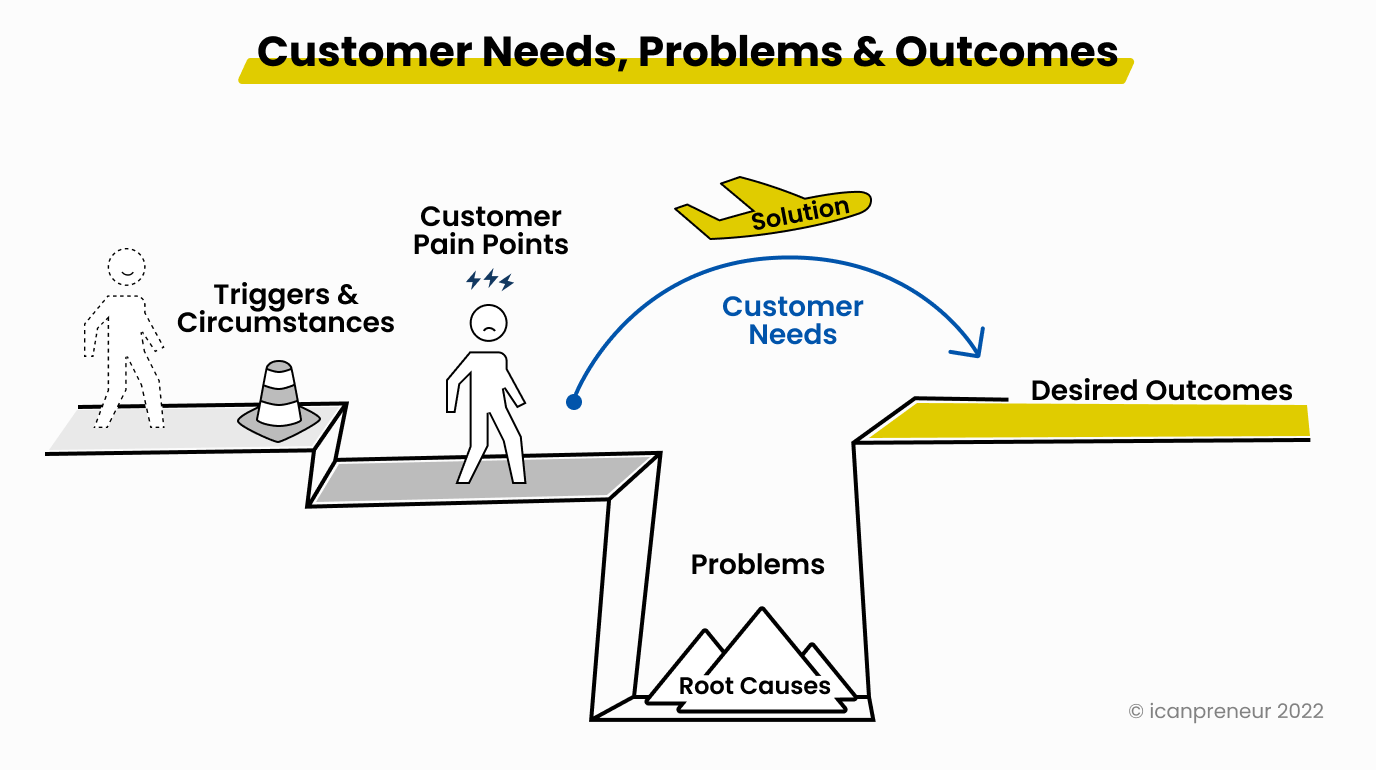The Connection Between Customer Needs, Problems & Outcomes
Dec 9, 2022 • 5 min read
How should I think about what I’m solving for my customers? Should I focus on customer needs, customer problems or desired outcomes? The goal of this article is to provide a conceptual model that clarifies the differences between each of these concepts and how they are connected. Let's go!
What are Mental Models?
If you want to be able to effectively solve unknown and new problems, learn mental models. Mental models are concepts that represent someone’s understanding of “how things work” in the real world. As we cannot keep all the details of the world around us in our brains, we use models to simplify that complexity into smaller, comprehensible and organized chunks. By definition every model is a tool, not a mirror and it won’t represent the reality 100%. At the same time, having accurate enough mental models in our heads enables us to see the challenging situations that we get into through these lenses which help us to break them down to smaller pieces.
Customer Needs, Problems & Outcomes Mental Model
“A picture is worth a thousand words”, they say. OK, here is one:
 Let’s go through each concept on the diagram and cover it in a few words what their role is.
Let’s go through each concept on the diagram and cover it in a few words what their role is.
Triggers & Circumstances - what happened in the life of people that caused them to need something and get something done. It is the moment when somebody enters a market and becomes a potential customer. For example, the second a new baby is born, its parents enter the market of diapers and other newborn related items. Knowing the different circumstances in which a need arises is of critical importance for an effective market segmentation.
Customer Needs - what a customer wants or needs to get done. Good candidates for needs to address with new products or services are ones that are not adequately met by any other currently available solution on the market. We call them Unmet Needs or Underserved Needs. Figuring out what the unmet needs of your target customers are is the base on which you can identify your true competitors. They are all the alternative solutions that your target customers are already using or considering. By focusing on underserved needs you ensure that your value proposition is unique as nothing currently available satisfies your target customers.
Desired Outcomes - what is the ultimate state of being that the customer wants to achieve as measured with their own measuring stick. What are the KPIs that they want to improve, in what direction and by how much. That informs what measurable outcome your product should deliver to the customers after they start using it.
Customer Problems - one or more of the obstacles that prevent the customer from getting from where they are to where they want to be i.e. to achieve their desired outcomes. This is the most natural way people think - what obstacle prevents me from achieving what I want and how to overcome it. Understanding how your customers think about their problems as well as how they talk about them will help you build a message that resonates with them.
Root Causes - the underlying reasons that cause Customer Problems to exist. The root cause analysis will help you understand what are the causes which properly addressed by your product will solve the problems for your customers. This will help you develop an effective solution.
Customer Pain Points - these are just customer needs that are not adequately met which results in customer dissatisfaction and discomfort. Pain points are important aspects because people generally buy for one of two reasons - they are either a) moving toward pleasure or b) away from pain. Having a strong pain around an important need causes the urgency and ultimately willingness to pay for a solution be it product or service.
Usefulness of The Model
Each piece of this mental model has its own important role in boosting your chances of building a successful product or service. It is simply not enough to aim at solving problems you hear from customers as that does not provide you with enough context. The model will help you uncover all the needed aspects of your target customer and will inform your product and go-to-market strategy.
One More Thing
At Icanpreneur we believe that the #1 reason startups fail 9 out of 10 times is simply because the typical entrepreneurial path is chaotic and is based primarily on gut feeling and luck. We believe that entrepreneurs should use their intuition and gut feeling to imagine the vision of the intended impact of their startup instead of discovering what the entrepreneurship steps are. This is where we can help - at Icanpreneur we are focused on building the guided journey that helps aspiring and early entrepreneurs systematically go from idea, through investment, to product/market fit.
Author
Founder & CEO of Icanpreneur. Passionate about connecting people with their purpose of becoming successful entrepreneurs.
